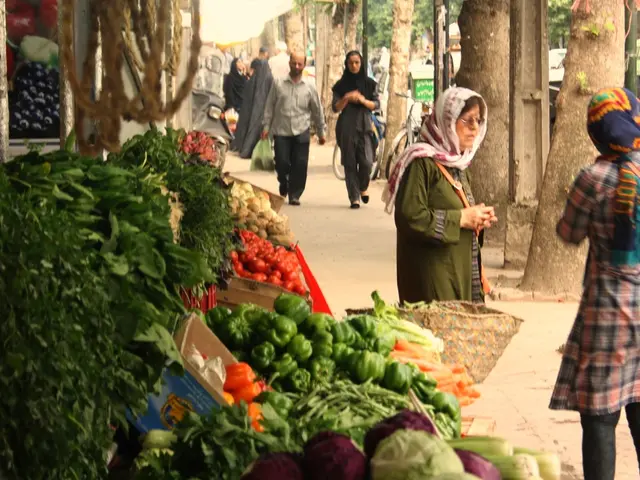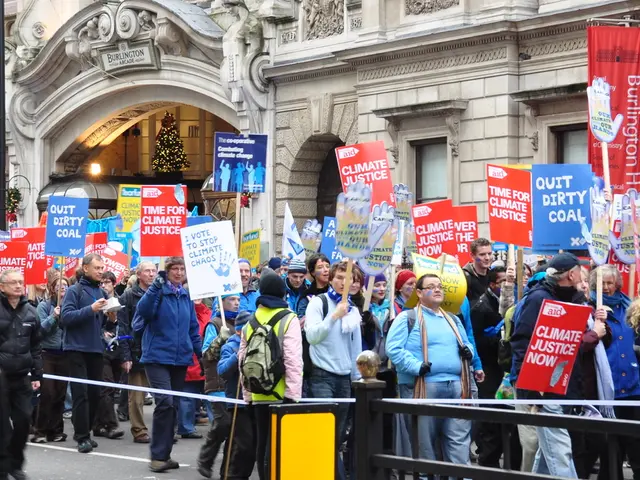Essential are modest living spaces
Reminiscing the First Heat Emergency Shelter
Artan Zeka, though he'd rather forget the sweaty summer days of 2022, vividly remembers the inauguration of Berlin Heat Relief. The temperature in the city hit a garlicky 42 degrees on July 18th. Until September, Zeka, with the International Bund (IB) Berlin-Brandenburg, coordinated this historical first heat emergency shelter in Germany.
Every Friday, catch up on the week's news:
Unsubscribe from our emails. Learn more about data protection*.
Hinz&Kunzt: Mr. Zeka, the World Health Organization called back in 2008 for European cities to strengthen their defenses against heat. What transpired to activate Berlin's groundbreaking heat emergency shelter?
Artan Zeka: We traced our heat relief roots to the cold relief. In winters, the IB Berlin-Brandenburg operates emergency shelters across the city. We've long harbored dreams of summer shelters, too. Last June, we sealed a deal with Tempelhof-Schöneberg district - nabbing the digs we utilize for the cold relief for our summer project. We drew inspiration from Spain and the USA, where homeless people embraced the merciless sun in so-called "cooling houses" - albeit, for a short while.
What were the essentials offered?
We swung our doors open at 10 am, followed by a quick munch, then chilled drinks all day. We passed sunscreen and hats, and the weary could catch a shut-eye in one of 30 cozy beds. Between 4 and 6 pm, a hearty dinner awaited. We closed at 8 pm.
Did the shelter shut down at night?
Sadly, yes. Nighttime operations demanded stricter regulations, such as fire safety, and incurred extra costs. Our tenacious volunteers were already stretched thin.
How were the accommodations kept cool?
With sturdy fans. No air conditioning. However, the folks didn't fret about the temp indoors - they just appreciated some refuge from the relentless sun. Many found solace beneath the shade of trees in our courtyard.
How was the service publicized?
We predicted 30 people a day, but 60 to 65 showed up. Our beds stayed occupied the whole time. Some took their sweet time, enjoying breakfast, a shower, a quick snooze, and exiting only when the clock hit 8 pm. Others dropped by for just a few hours.
Doctors caution that hostility escalates with the heat. How did the patrons behave?
Shelters brimming with cold relief seekers are frostbitten and eager for rest. Those in summer, though, are a simmering cauldron. A bit of the sauce or a territorial tiff can rapidly boil over. Small shelters are essential even more so in summer than in winter.
City hotlines or health department news may offer specifics on local heat emergency services. As the research results suggest, Berlin, like many cities, may have instituted measures to deal with heat emergencies, such as temporary cooling centers or infrastructure adaptations to withstand extreme weather. Additionally, as seen in broader initiatives across Germany, the city likely provides services and assistance to various populations, including refugees and those in need.
The groundbreaking heat emergency shelter in Berlin, initiated by Artan Zeka and the International Bund (IB) Berlin-Brandenburg, offered essential services such as food, drinks, sunscreen, hats, and sleeping facilities, catering to individuals seeking relief from the heat.The shelter, operational from 10 am to 8 pm, was Publicized effectively, attracting more people than initially anticipated. Doctors noted that while hostility does escalate with the heat, the patrons of the Berlin Heat Relief showed remarkable resilience and cooperation during their stay.*In addition to heat emergency services, broader initiatives across Germany, such as environmental-science research and programs focusing on health-and-wellness, fitness-and-exercise, mental-health, and climate-change, aim to support the well-being of the population, addressing various needs amidst a changing climate.








